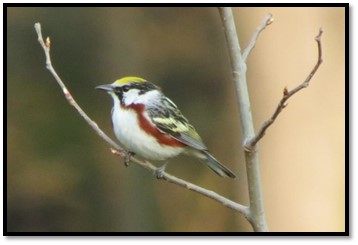
By Ryan Reed
Since this weekend will mark the opening day of the spring gobbler season in PA (for youth only), it seems a good time to describe some interesting facts about this treasured commonwealth gamebird.
 During the spring season, hunting regulations specify “bearded” birds as meeting the definition of a turkey that can be legally harvested. Some folks might not know that hens (females) can sport a beard, and thus, they are legal to harvest. Although completely legal, discerning hunters who can spot other identifying characteristics (lack of bright coloration on head and neck, for example) may wish to pass on pulling the trigger on a female bird.
During the spring season, hunting regulations specify “bearded” birds as meeting the definition of a turkey that can be legally harvested. Some folks might not know that hens (females) can sport a beard, and thus, they are legal to harvest. Although completely legal, discerning hunters who can spot other identifying characteristics (lack of bright coloration on head and neck, for example) may wish to pass on pulling the trigger on a female bird.
Occasionally, turkey beards will occur as double or triple, and rarely in greater number. In 2017, an 11-year-old harvested a big tom with 13 beards in Adams County, PA. According to the National Wild Turkey Federation, this was a new record for number of beards on a bird of the eastern subspecies, besting the previous record by three.
Rarer yet, some wild turkeys will exhibit completely white feathers like those seen on traditionally pen-reared livestock. A quick scan of web-based articles reveals precious few instances of successful harvests of such birds.
Ecologically speaking, the diet of wild turkeys is incredibly diverse. They’ve been reported to feed on cacti, whole walnuts, snails, slugs, lizards, snakes, frogs, fish, lichens, crabgrass, tree seedlings, and hemlock needles. They even ingest stones, which aid in grinding food in the muscular gizzard.
Most turkeys do not live beyond a few years, but some live to be 10 or older. A hen recently made the news in Pennsylvania as one of the oldest ever recaptured at 12 years old. The largest wild turkeys in Pennsylvania can weigh over 30 pounds.

Photo credit: Geoff Gallice, Wikimedia Commons
Wild turkeys can run up to a reported 18 miles per hour, and can glide for over a mile (If you’ve ever flushed one off the top of a mountain, this fact is easy to believe). If you happen to take the field tomorrow with a young hunter, hopefully you won’t see your tom attempting either of these.
For more on wild turkeys and hunting, please look here:
https://www.pgc.pa.gov/Education/WildlifeNotesIndex/Pages/WildTurkey.aspx
and here:
https://www.pgc.pa.gov/HuntTrap/Law/Pages/SeasonsandBagLimits.aspx
Forest Fridays is a feature of the DCNR Bureau of Forestry.




